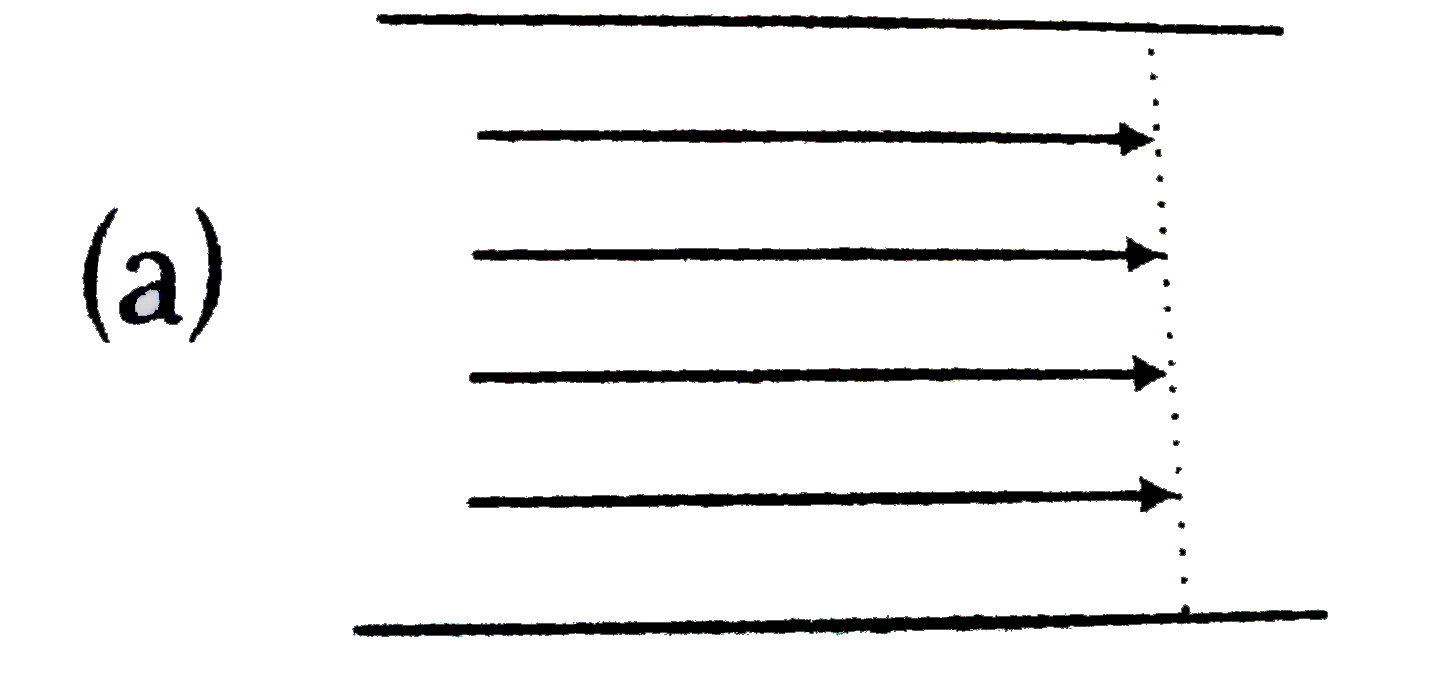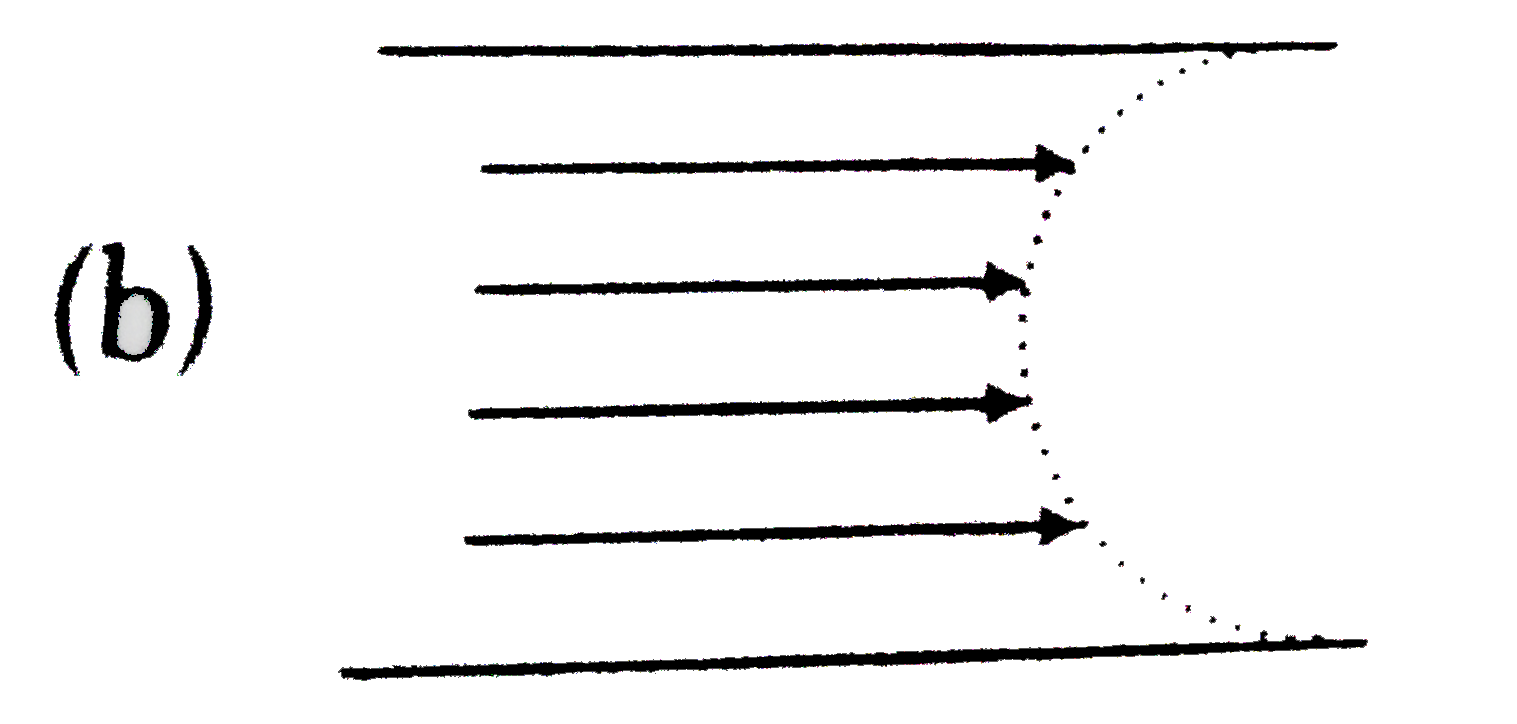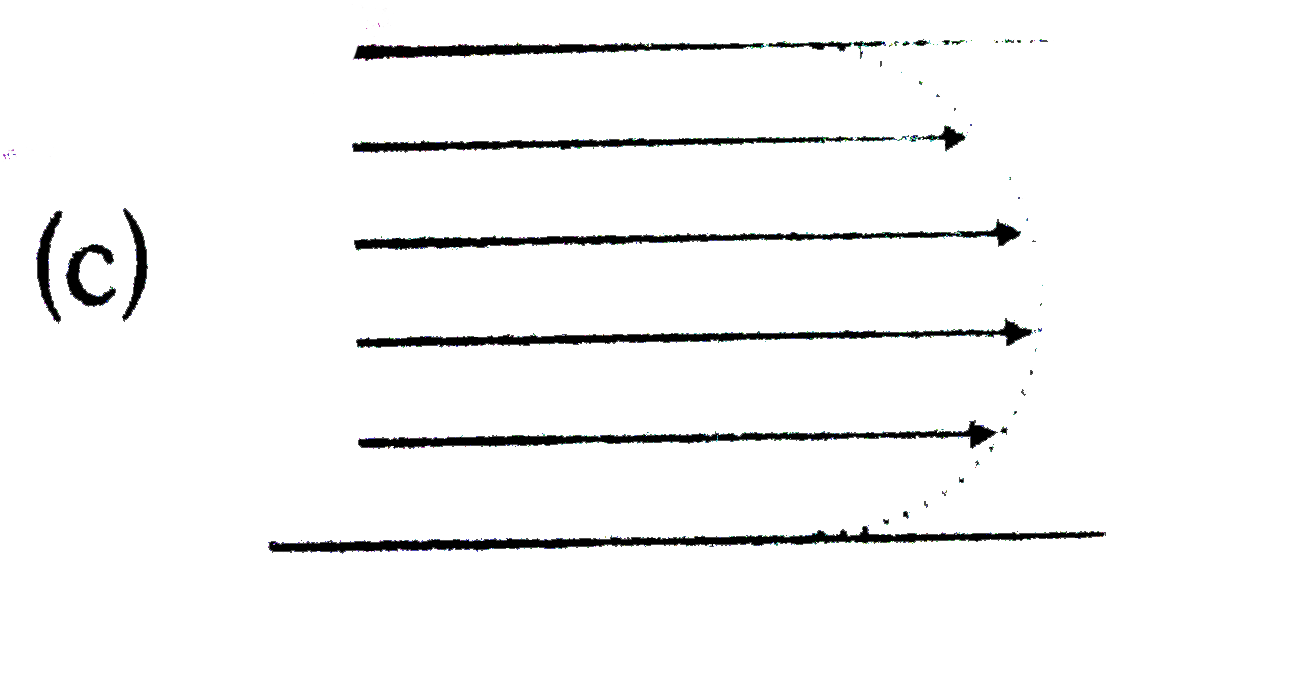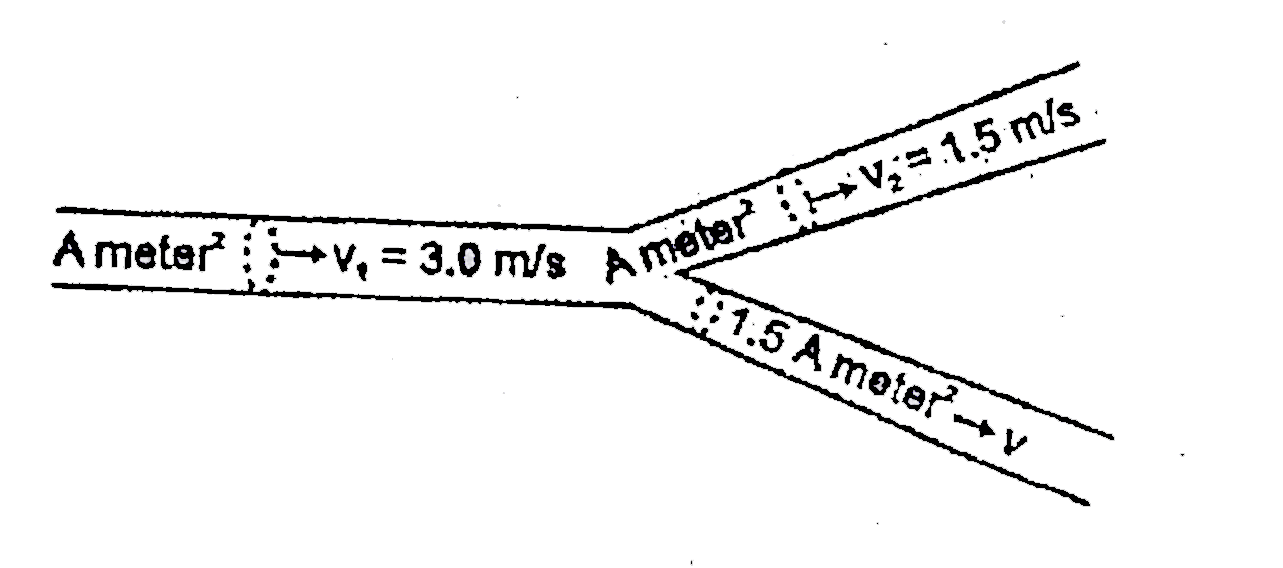A viscous fluid is flowing through a cylindrical tube. The velocity distribution of the fluid is best represented by the diagram



None of these
The correct Answer is:C
To solve the problem of determining the velocity distribution of a viscous fluid flowing through a cylindrical tube, we can follow these steps:
Step 1: Understand the Flow Characteristics
In a cylindrical tube, the flow of a viscous fluid is characterized by a velocity gradient. The fluid moves in layers (or laminae), and due to the viscosity, the velocity of the fluid is not uniform across the cross-section of the tube.
Hint: Remember that in viscous flow, layers of fluid close to the wall move slower than those in the center.
Step 2: Identify the Velocity Profile
The velocity of the fluid is maximum at the center of the tube and decreases as you move towards the walls. This is because the fluid in contact with the wall experiences a no-slip condition (velocity = 0 at the wall).
Hint: Visualize the tube and think about how the fluid layers interact with the wall.
Step 3: Sketch the Velocity Distribution
You can sketch a graph where the x-axis represents the distance from the center of the tube and the y-axis represents the velocity of the fluid. The graph will show a parabolic shape, peaking at the center and tapering off to zero at the walls.
Hint: The shape of the graph is crucial; it should reflect that the velocity decreases smoothly from the center to the edges.
Step 4: Identify the Correct Option
Based on the description and the sketch of the velocity distribution, you can identify the correct option from the given choices. The correct representation will show a maximum velocity at the center and a gradual decrease towards the walls.
Hint: Look for a graph that has a peak at the center and approaches zero at the edges.
Conclusion
The velocity distribution of a viscous fluid flowing through a cylindrical tube is best represented by a parabolic curve, indicating that the velocity is highest at the center and decreases towards the walls of the tube. The correct option is C.
In a cylindrical tube, the flow of a viscous fluid is characterized by a velocity gradient. The fluid moves in layers (or laminae), and due to the viscosity, the velocity of the fluid is not uniform across the cross-section of the tube.
The velocity of the fluid is maximum at the center of the tube and decreases as you move towards the walls. This is because the fluid in contact with the wall experiences a no-slip condition (velocity = 0 at the wall).
You can sketch a graph where the x-axis represents the distance from the center of the tube and the y-axis represents the velocity of the fluid. The graph will show a parabolic shape, peaking at the center and tapering off to zero at the walls.
Based on the description and the sketch of the velocity distribution, you can identify the correct option from the given choices. The correct representation will show a maximum velocity at the center and a gradual decrease towards the walls.
The velocity distribution of a viscous fluid flowing through a cylindrical tube is best represented by a parabolic curve, indicating that the velocity is highest at the center and decreases towards the walls of the tube. The correct option is C.
Topper's Solved these Questions
- BOOK - DC PANDEY ENGLISHCHAPTER - FLUID MECHANICSEXERCISE - B) Medical entrance special format question19videos
FLUID MECHANICS
- BOOK - DC PANDEY ENGLISHCHAPTER - FLUID MECHANICSEXERCISE - Match the columns6videos
FLUID MECHANICS
- BOOK - DC PANDEY ENGLISHCHAPTER - FLUID MECHANICSEXERCISE - Check point 13.410videos
FLUID MECHANICS
- BOOK - DC PANDEY ENGLISHCHAPTER - EXPERIMENTSEXERCISE - Subjective15videos
EXPERIMENTS
- BOOK - DC PANDEY ENGLISHCHAPTER - GENERAL PHYSICSEXERCISE - INTEGER_TYPE2videos
GENERAL PHYSICS
Similar Questions
Charge distribution in iodine monochloride is best represented as
View SolutionA steady electric current is flowing through a cylindrical conductor. Then,
View SolutionThe volume of a liquid (V) flowing per second through a cylindrical tube depends upon the pressure gradient (p/l) radius of the tube (r) coefficient of viscosity (η) of the liquid by dimensional method the correct formula is
View SolutionFor a fluid which is flowing steadily, the level in the vertical tubes is best represented by
View SolutionThe velocity of liquid flowing through a tube at certain distance from the axis of tube
View SolutionA spherical ball is dropped in a long column of a viscous liquid. The speed of the ball as a function of time may be best represented by the graph
 View Solution
View SolutionAn incompressible liquid flows through a horizontal tube as shown in the figure. Then the velocity 'v' of the fluid is:
 View Solution
View SolutionViscous fluid of living cell was called "sarcode" by
View SolutionFluid Flows
View SolutionThe longitudinal wave velocity in fluid
View Solution

